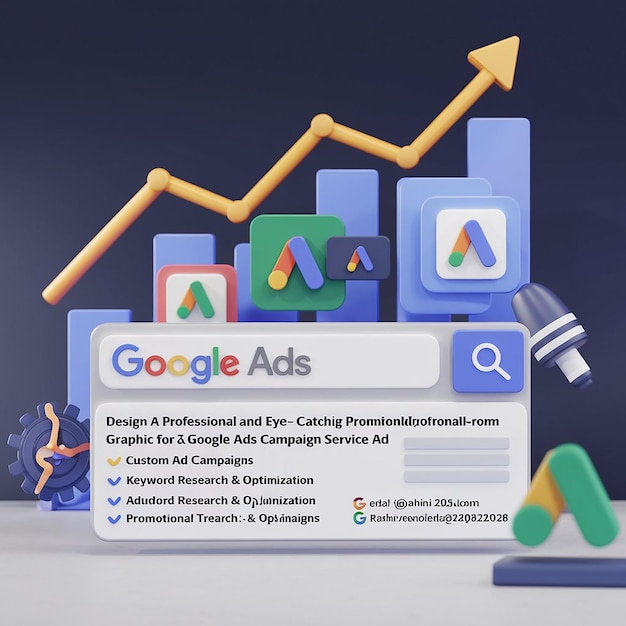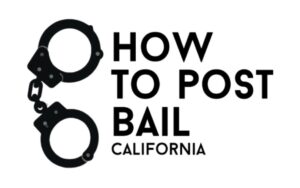Introduction
In today’s digital world, businesses must adapt to the evolving landscape of online advertising to stay competitive. One of the most powerful platforms to reach potential customers is Google Ads. As one of the largest advertising networks globally, Google Ads offers businesses an opportunity to target specific audiences, increase visibility, and drive traffic to their websites. In this blog post, we will explore the benefits of Google Ads services, how they work, and how businesses can maximize their return on investment (ROI) using this platform.
What Are Google Ads Services?
Google Ads services refer to the tools and techniques used to create, manage, and optimize paid advertisements on Google and its network of websites. The ads appear in search results, YouTube, and on other platforms that partner with Google. Google Ads allows businesses to advertise their products or services directly to users based on their search intent, demographics, interests, and browsing behavior.
Google Ads services typically include the following:
-
Search Ads: These ads appear on Google search results when users search for specific keywords.
-
Display Ads: These are visual ads that appear on websites within Google’s Display Network.
-
Video Ads: These ads appear on YouTube and can be highly engaging for users.
-
Shopping Ads: These ads showcase products directly on Google Search, allowing users to view prices and product information.
-
App Ads: These ads promote mobile applications and help increase app downloads.
Why Google Ads Services Matter for Your Business
Businesses, regardless of their size, can benefit significantly from using Google Ads services. Below are some of the key advantages:
1. Targeted Reach
Google Ads allows businesses to target their ads to specific audiences based on keywords, location, device type, language, and more. This level of targeting ensures that businesses reach the right people who are actively searching for products or services similar to what they offer. With Google Ads, you’re not wasting your budget on irrelevant clicks; you’re driving quality traffic to your website.
2. Cost-Effective Advertising
One of the key advantages of Google Ads services is the ability to control your budget. With Google Ads, businesses can set daily or monthly spending limits, ensuring that their advertising costs don’t spiral out of control. Additionally, the platform operates on a pay-per-click (PPC) model, meaning you only pay when someone clicks on your ad. This makes it a cost-effective method to advertise, especially when compared to traditional forms of advertising like TV or print.
3. Measurable Results
Google Ads provides detailed performance metrics, allowing businesses to track the effectiveness of their campaigns in real-time. With features like conversion tracking and reporting, you can measure key performance indicators (KPIs) such as clicks, impressions, conversion rates, and more. This data helps businesses make informed decisions about optimizing their campaigns for better results.
4. Instant Visibility
Unlike SEO, which can take time to show results, Google Ads allows businesses to gain immediate visibility on Google search results. This instant exposure can be particularly beneficial for businesses looking to drive traffic during product launches, sales events, or seasonal promotions.
5. Brand Awareness
Even if users don’t click on your ads immediately, they still see your brand name and message. Over time, this can help increase brand awareness and keep your business top of mind for potential customers. With Google Ads services, businesses can consistently stay in front of users, enhancing brand recall and trust.
How Does Google Ads Work?
Google Ads operates on an auction-based system where businesses bid for ad placements based on the keywords they want to target. When a user searches for a specific term, Google evaluates the relevance and quality of the ads being bid on and decides which ads will appear in the search results. Here’s a breakdown of how the process works:
1. Keyword Selection
The first step in running a Google Ads campaign is selecting the right keywords. Keywords are the terms or phrases that users enter into Google’s search bar when looking for products or services. By targeting relevant keywords, businesses ensure their ads appear when potential customers search for their offerings.
2. Bidding
Once keywords are chosen, businesses must decide how much they are willing to pay per click (CPC) on their ads. The more competitive the keyword, the higher the bid needed to secure an ad placement. However, Google also takes into account other factors such as ad relevance, landing page quality, and expected click-through rate (CTR) when determining the ad rank.
3. Ad Rank and Quality Score
Google uses an algorithm to calculate an “Ad Rank” to determine which ads will appear in the search results and their position. Factors that influence Ad Rank include:
-
Bid amount: How much you’re willing to pay for a click.
-
Quality Score: Google evaluates the quality of your ads, keywords, and landing pages. The better the quality, the higher your Ad Rank, which can result in a better position for a lower bid.
-
Expected Impact of Extensions: These are additional elements like site links or phone numbers that can enhance your ad’s visibility.
4. Ad Creation
The next step is to create the actual ads. Google Ads allows businesses to design text ads, image ads, and video ads based on the campaign type. A well-crafted ad is crucial for attracting attention and encouraging clicks. The ad copy should be clear, concise, and aligned with the user’s search intent.
5. Campaign Optimization
Once the campaign is live, it’s essential to monitor its performance regularly. Google Ads provides a range of metrics to analyze, such as CTR, conversion rate, and cost-per-conversion. By continuously testing different ad variations, keywords, and bidding strategies, businesses can optimize their campaigns for better performance.
Types of Google Ads Campaigns
Google Ads offers several types of campaigns to cater to different business goals. Each campaign type has its own set of features and benefits.
1. Search Campaigns
Search campaigns are the most common type of Google Ads campaign. These ads appear in Google’s search engine results when users search for specific keywords. They are typically text-based and highly relevant to user queries. Search ads are great for businesses aiming to drive immediate traffic to their websites.
2. Display Campaigns
Display campaigns allow businesses to display visual ads (images, banners, etc.) on websites within Google’s Display Network. These ads can be shown to users based on demographics, interests, or previous interactions with your site. Display campaigns are ideal for brand awareness and retargeting.
3. Video Campaigns
Video campaigns allow businesses to run ads on YouTube and other Google partner sites. Video ads are highly engaging and can be used to convey a message or showcase a product or service in a dynamic format. These campaigns are perfect for businesses aiming to engage their audience with compelling visuals.
4. Shopping Campaigns
Shopping ads are ideal for eCommerce businesses looking to promote their products directly in Google’s search results. These ads display product images, prices, and store information, making it easy for users to compare products before making a purchase.
5. App Campaigns
App campaigns are designed to promote mobile applications. These ads appear across Google’s networks, including Search, Play Store, YouTube, and more. With app campaigns, businesses can target users who are likely to download and engage with their mobile apps.
How to Maximize Your ROI with Google Ads
To get the most out of your Google Ads services, it’s essential to optimize your campaigns. Below are a few tips to help businesses maximize their ROI:
1. Refine Your Keywords
Regularly review and refine your keyword list. Add negative keywords to filter out irrelevant traffic and focus on the most profitable terms. Use long-tail keywords that are more specific and likely to convert.
2. Improve Your Ad Copy
Test different variations of your ad copy to see which one resonates best with your audience. A compelling call-to-action (CTA) can make a significant difference in conversion rates.
3. Optimize Your Landing Pages
Ensure that your landing pages are relevant, fast-loading, and provide a seamless user experience. A poor landing page experience can lead to high bounce rates and wasted ad spend.
4. Monitor and Adjust Bids
Monitor your campaign performance and adjust your bids based on the results. You may want to increase bids for high-performing keywords and decrease them for underperforming ones.
5. Utilize Ad Extensions
Take advantage of ad extensions to provide additional information and make your ads more appealing. Extensions like sitelinks, call extensions, and location extensions can enhance the visibility of your ads.
Conclusion
Google Ads services offer businesses a powerful way to reach their target audience, drive traffic, and achieve measurable results. By leveraging the right strategies, businesses can optimize their campaigns and maximize their ROI. Whether you’re looking to increase brand awareness, drive sales, or promote a new product, Google Ads can help you achieve your marketing goals. With its robust targeting options, cost-effective pricing model, and real-time tracking capabilities, Google Ads remains one of the most effective advertising platforms available today.







